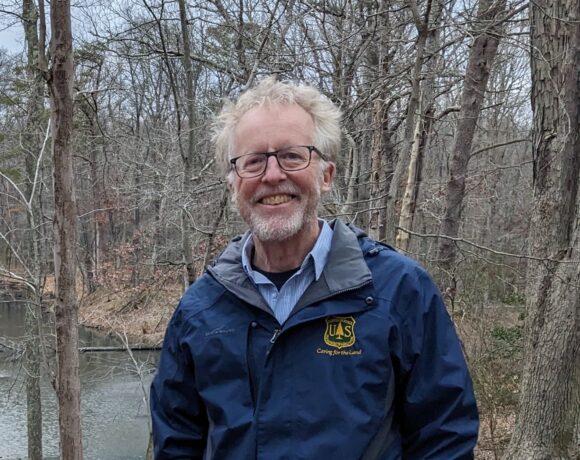This month, we interviewed Dr. Cliff Kraft and Pete McIntyre of the Adirondack Fishery Research Program at Cornell University.
Lessons from suppressing smallmouth bass invasions in the context of environmental change in the Adirondacks
By Justin Dalaba
Widely recognized as the largest publicly protected area in the contiguous United States, the Adirondack region in New York is certainly no stranger to invasive species impacts. And not all introduced species travel far from their home range. Originally native to all of the watersheds surrounding the Adirondack uplift, smallmouth bass were introduced to many Adirondack waters as a result of 20th century stocking. While some anglers appreciate having this familiar species to catch, bass have flourished in many waters to the detriment of many native fishes and invertebrates. This adaptable predator is especially known for driving declines of New York’s official state fish: the brook trout.
For Cornell researchers, this long-standing ecological challenge provides a great opportunity to study and inform management. Cliff Kraft, who has headed the Adirondack Fishery Research Program for 25 years, says “they’ve been introduced into a lot of the Adirondack lakes, including two of the lakes that our team has been working in for around 70 years.” Pete McIntyre, his successor in leading the program, describes their research as “the intersection between ‘what do we do about smallmouth bass’ and ‘what should we be celebrating about upstate New York aquatic biodiversity’.”

By conducting a long-term, labor-intensive suppression of bass populations in two lakes, Cliff concludes that “we’re now beginning to get some insight into what effect that our efforts have had on the bass population itself, which would be analogous to what happens in a lot of commercial fisheries.” According to Cliff, “the most robust finding from this is that if we just keep removing a large proportion of the adult population, we’re just encouraging them to reproduce effectively,” a key take-away for management.
Pete adds that “The consistent, strong recruitment of young bass offers important lessons about why invader suppression is so difficult in the real world. However, by virtue of the length of this experiment, we are now in a position to design strong tests of how different control approaches might enable us to be more efficient in controlling bass.” Moreover, he points out that smallmouth bass and their cousins are globally prominent invaders, hence their insights from the Adirondacks might be useful in other regions.
While their data suggest that complete eradication of smallmouth bass may be impossible, Cliff says “we have 8 to 10 species of [native] fish that are responding to the removal of this large predator from these systems.” Pete explains, “We’ve seen that even a really slow-growing, long-lived species like lake trout can respond to suppression of an aggressive competitor if you give it a decade or two.”
One of the most unusual dimensions of this study is the creation of a long-term dataset on all the fish species of these lakes, not just smallmouth bass. Thus, a project that focused on one invader is now enabling the team to analyze the dynamics of all of fish populations simultaneously, including their within-lake dynamics across shoreline sites.”

As the Adirondacks face a new wave of environmental shifts driven by climate change, the questions that their team ask are going well beyond fisheries. Pete says “many Adirondack lakes are experiencing deep-water deoxygenation, where the bottom waters that have historically served as a key temperature refuge for brook trout and other cold-loving species are becoming inhospitable because of oxygen depletion in the late summer.” Forcing these denizens of the depths into shallower water could further expose them to smallmouth bass, at the same time that warm-water invaders like bass are thriving in what used to be very cold Adirondack lakes. Pete and the team are also exploring shifts in mercury bioaccumulation as a dimension of climate change impacts that may have synergies with species invasions. He says “the changes in the food web driven by bass have affected the way that mercury is routed through the food web, which could translate into differences in the degree of contamination of fish that are caught and eaten by people.”
Pete concludes that “species invasions and climate change are profound shifts that now affect most Adirondack Lakes. So our work will continue to focus on smallmouth bass suppression, yet at the same time it’s about so much more than bass.”
More researcher spotlights:













